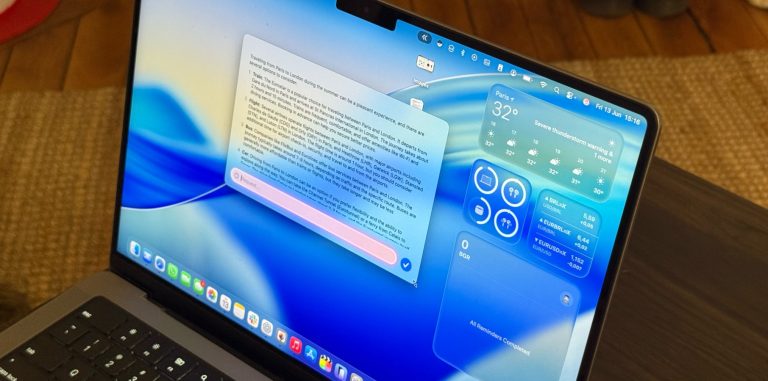After unveiling pretty much all the M4 Macs (perhaps there’s still a Mac Pro to be announced), Apple can now move on to the next M5 chip generation. The M5 family will mark an important milestone for Cupertino as the company keeps improving its processors to perform AI tasks better.
While there are only a few rumors about when Apple is expected to release M5 Macs, the picture of what the company could unveil in the next few quarters is taking shape.
M5 will be big for Apple Intelligence
Apple reportedly started mass-producing the M5 chip in January. While we’re still months away from an official release, ET News says the “Apple M5 chip packaging is handled by Taiwan’s ASE, the US’ Amkor, and China’s JCET. Initial mass production has been started by ASE, and mass production with Amkor and JCET will follow suit.”
These companies also add resources to make the high-end M5 Pro, M5 Max, and M5 Ultra chips. While power efficiency has been improved by 5-10% and performance improved by 5% compared to the M4 chip, we need to see them in action to know if the AI processors can fully power future Apple Intelligence features and other complex tasks.
According to The Elec, the M5 chip will feature an enhanced ARM architecture and be manufactured using TSMC’s latest 3-nanometer process technology, an improvement over the M3 and M4 chips. The M5 processor will adopt a new System on Integrated Chip (SoIC) technology, which enhances thermal management and reduces electrical leakage.
With that, we could see enhancements in performance and efficiency, and a broader focus on Neural Engine tasks for AI and Apple Intelligence. Interestingly enough, now that Apple announced it might skip Ultra chips in some generations, it’s possible that the company will unveil an M5 Ultra processor due to this new SoIC technology.
M5 MacBook and Mac release dates

The M5 Macs release date was first expected for the second half of 2025. While Apple sometimes tweaks the official launch of its computers, we can get the first batch of M5 Macs between October and March.
The last surprise the company gave us was a Mac Studio with an M3 Ultra and M4 Max options in March, as it said not every generation will have an M Ultra chip.
With that in mind, this is the possible release dates for the M5 Macs:
- MacBook Pro: The M5 MacBook Pro was first expected to be released in the second half of 2025. However, Bloomberg‘s Mark Gurman suggests this device might come in early 2026 in 14-inch and 16-inch options with the M5, M5 Pro, and M5 Max variants.
- MacBook Air: If Apple follows the trend, a new MacBook Air will likely be released by the beginning of 2026, around the first or second quarter.
- Mac Studio: Rumors suggest that Apple is planning a new Studio Display, so the company might also release a new Mac Studio with the M5 chip. This computer could ship with an M5 Ultra chip by mid-2026.
Apple’s schedule for releasing updates for the Mac mini, iMac, and Mac Pro has been irregular lately. That said, if the company plans to release these M5 Macs, the first two could be available anytime from late 2025 to mid-2026, while the latter could be available from mid-2026 to late 2026.
Identifiers suggest Apple is working on these new Macs, including a low-entry version. However, it’s expected to feature an A18 chip instead of the M-series.
macOS Tahoe to power the next generation of M5 Macs

Since the M5 Macs are expected to be released as soon as the second half of 2025, they will feature Apple’s new macOS Tahoe system. With that, these new computers will come with the newest Liquid Glass UI.
With Liquid Glass, Apple wants to make the experience between the iPhone, the iPad, and the Mac more seamless. The company is also adding Live Activities to the Mac as part of this integration, in addition to Phone and Journal apps.
Cupertino is also bolstering Apple Intelligence features, as it’s improving Genmoji and Image Playground, giving ChatGPT a broader access to system features, and new Live Translation functionality.
macOS Tahoe is expected to be released later this fall alongside iOS 26 and more.









